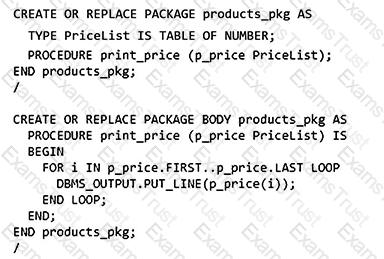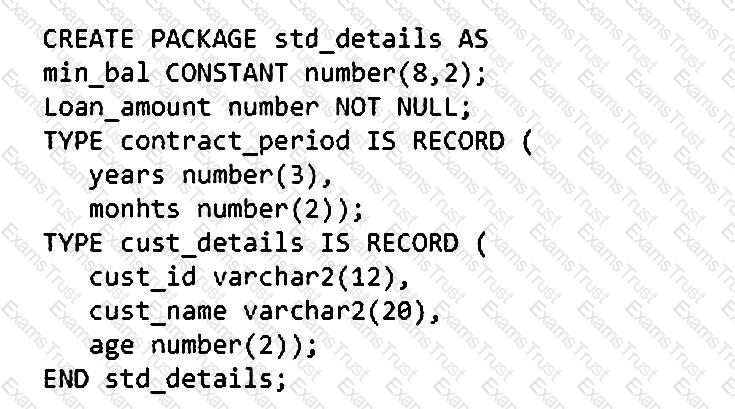Examine these statements issued by user SH which execute successfully:

DBMS_OUTPUT.PUT_LINE(p_price(i)); END LOOP; END; END products_pkg; /
Now, examine this anonymous block executed by SH:

Which is true about the anonymous block?
Examine this DECLARE section:

Which line will cause an error upon execution?
Examine this statement which is submitted for compilation:

Which three are true? (Choose three.)
Which three are true regarding code based access control (CBAC)? (Choose three.)
Which code will successfully create a BODILESS PACKAGE to standardize CONSTANTS and EXCEPTIONS declarations?
Which three are true about the procedure overloading feature? (Choose three.)
Which is the correct method to implement a local subprogram in an anonymous block?
For which three SYSTEM EVENTS can triggers be created? (Choose three.)
Which two are true about INDEX-BY tables? (Choose two.)